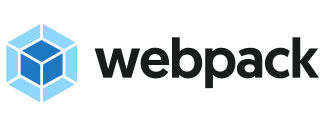A CSS hack is a coding technique used to hide or show CSS markup depending on the browser, version number, or capabilities. Browsers have different interpretations of CSS behavior and different levels of support for the W3C standards. CSS hacks are sometimes used to achieve consistent layout appearance in multiple browsers that do not have compatible rendering. Most of these hacks do not work in modern versions of the browsers, and other techniques, such as feature support detection, have become more prevalent.
Haml is a templating system that is designed to avoid writing inline code in a web document and make the HTML cleaner. Haml gives you the flexibility to have some dynamic content in HTML. Similar to other template systems like eRuby, Haml also embeds some code that gets executed during runtime and generates HTML code in order to provide some dynamic content. In order to run Haml code, files need to have a .haml extension. These files are similar to .erb or .eRuby files, which also help embed Ruby code while developing a web application.
Svelte is a free and open-source component-based front-end software framework, and language created by Rich Harris and maintained by the Svelte core team members.

Sass is a preprocessor scripting language that is interpreted or compiled into Cascading Style Sheets (CSS). SassScript is the scripting language itself.
A CSS framework is a library allowing for easier, more standards-compliant web design using the Cascading Style Sheets language. Most of these frameworks contain at least a grid. More functional frameworks also come with more features and additional JavaScript based functions, but are mostly design oriented and focused around interactive UI patterns. This detail differentiates CSS frameworks from other JavaScript frameworks.

Cascading Style Sheets (CSS) is a style sheet language used for specifying the presentation and styling of a document written in a markup language such as HTML or XML. CSS is a cornerstone technology of the World Wide Web, alongside HTML and JavaScript.

Google Closure Tools is a set of tools to help developers build rich web applications with JavaScript. It was developed by Google for use in their web applications such as Gmail, Google Docs and Google Maps. As of 2023, the project had over 230K LOCs not counting the embedded Mozilla Rhino compiler.
jQuery Mobile is a touch-optimized web framework, specifically a JavaScript library, developed by the jQuery project team. The development focuses on creating a framework compatible with many smartphones and tablet computers, made necessary by the growing but heterogeneous tablet and smartphone market. The jQuery Mobile framework is consistent with other mobile app frameworks and platforms such as PhoneGap, Worklight, etc.
Dart is a programming language designed by Lars Bak and Kasper Lund and developed by Google. It can be used to develop web and mobile apps as well as server and desktop applications.

Bootstrap is a free and open-source CSS framework directed at responsive, mobile-first front-end web development. It contains HTML, CSS and (optionally) JavaScript-based design templates for typography, forms, buttons, navigation, and other interface components.

Brackets is a source code editor with a primary focus on web development. Created by Adobe Inc., it is free and open-source software licensed under the MIT License, and is currently maintained on GitHub by open-source developers. It is written in JavaScript, HTML and CSS. Brackets is cross-platform, available for macOS, Windows, and most Linux distributions. The main purpose of Brackets is its live HTML, CSS and JavaScript editing functionality.

Stylus is a dynamic stylesheet preprocessor language that is compiled into Cascading Style Sheets (CSS). Its design is influenced by Sass and Less. It is regarded as the fourth most used CSS preprocessor syntax. It was created by TJ Holowaychuk, a former programmer for Node.js and the creator of the Luna language. It is written in JADE and Node.js.
Leaflet is an open source JavaScript library used to build web mapping applications. First released in 2011, it supports most mobile and desktop platforms, supporting HTML5 and CSS3. Among its users are FourSquare, Pinterest and Flickr.

Google Fonts is a computer font and web font service owned by Google. This includes free and open source font families, an interactive web directory for browsing the library, and APIs for using the fonts via CSS and Android. Google Fonts is also used With the Google Workspace.

Webpack is a free and open-source module bundler for JavaScript. It is made primarily for JavaScript, but it can transform front-end assets such as HTML, CSS, and images if the corresponding loaders are included. Webpack takes modules with dependencies and generates static assets representing those modules.

Vue.js is an open-source model–view–viewmodel front end JavaScript library for building user interfaces and single-page applications. It was created by Evan You, and is maintained by him and the rest of the active core team members.

PostCSS is a software development tool that uses JavaScript-based plugins to automate routine CSS operations. It was designed by Andrey Sitnik with the idea taking its origin in his front-end work for Evil Martians.

IBM Plex is an open source typeface superfamily conceptually designed and developed by Mike Abbink at IBM in collaboration with Bold Monday to reflect the design principles of IBM and to be used for all brand material across the company internationally. Plex replaces Helvetica as the IBM corporate typeface after more than fifty years, freeing the company from extensive license payments in the process.

Bootstrap Studio is a proprietary web design and development application. It offers a large number of components for building responsive pages including headers, footers, galleries and slideshows along with basic elements, such as spans and divs.
Tailwind CSS is an open source CSS framework. The main feature of this library is that, unlike other CSS frameworks like Bootstrap, it does not provide a series of predefined classes for elements such as buttons or tables. Instead, it creates a list of "utility" CSS classes that can be used to style each element by mixing and matching.











